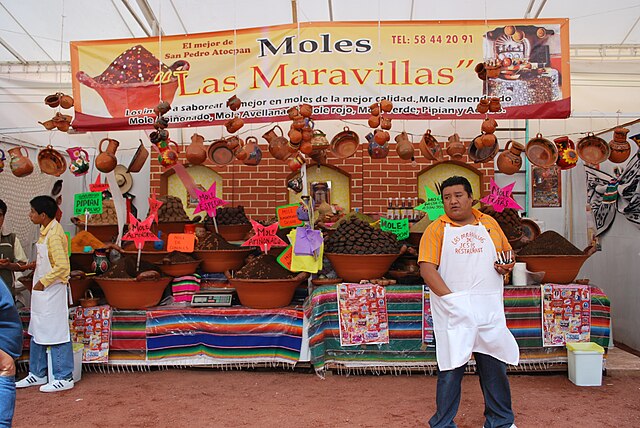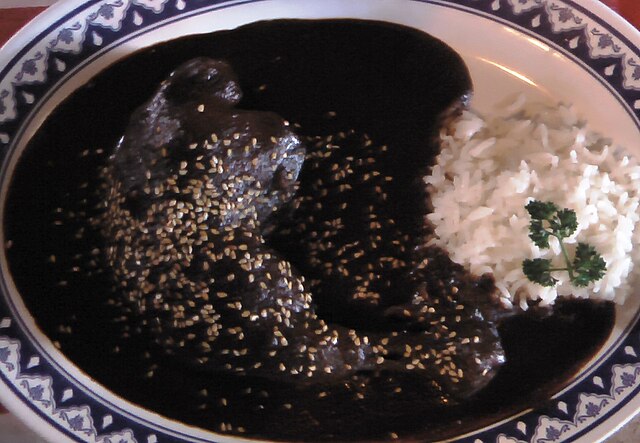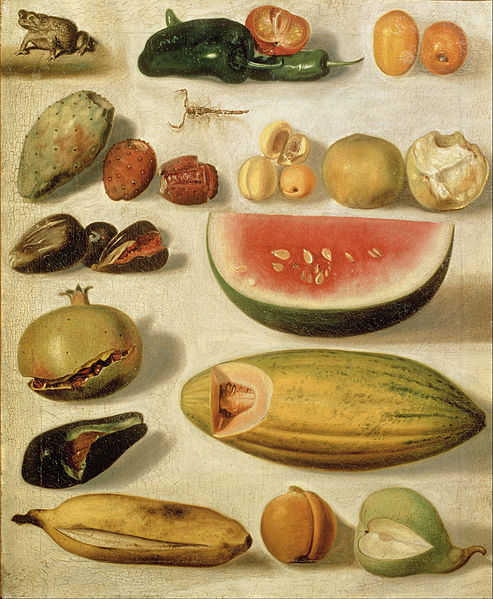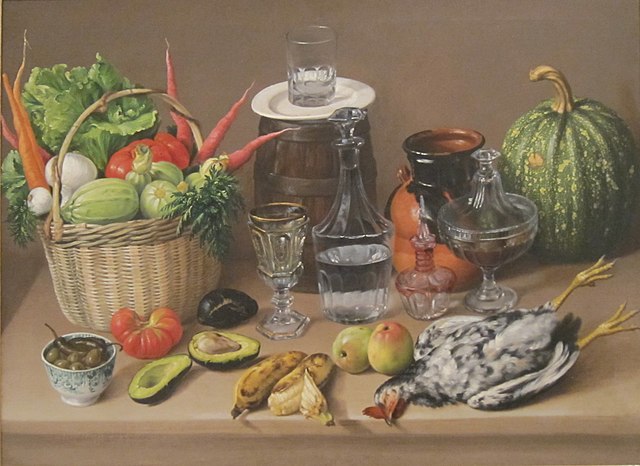Mole, meaning 'sauce', is a traditional sauce and marinade originally used in Mexican cuisine. In contemporary Mexico the term is used for a number of sauces, some quite dissimilar, including mole amarillo or amarillito, mole chichilo, mole colorado or coloradito, mole manchamantel or manchamanteles, mole negro, mole rojo, mole verde, mole poblano, mole almendrado, mole michoacano, mole prieto, mole ranchero, mole tamaulipeco, mole xiqueno, pipián, mole rosa, mole blanco, mole estofado, tezmole, clemole, mole de olla, chimole, guacamole and huaxmole.
Chicken in a dark red mole
Woman cooking mole at a small restaurant in San Pedro Atocpan
Selling mole mixes at the Feria Nacional del Mole in San Pedro Atocpan
Jars of commercially available mole negro and mole rojo, as sold in Oaxaca, Mexico
Mexican cuisine consists of the cooking cuisines and traditions of the modern country of Mexico. Its earliest roots lie in Mesoamerican cuisine. Its ingredients and methods begin with the first agricultural communities such as the Olmec and Maya who domesticated maize, created the standard process of nixtamalization, and established their foodways. Successive waves of other Mesoamerican groups brought with them their cooking methods. These included: the Teotihuacanos, Toltec, Huastec, Zapotec, Mixtec, Otomi, Purépecha, Totonac, Mazatec, Mazahua, and Nahua. With the Mexica formation of the multi-ethnic Triple Alliance, culinary foodways became infused.
Mole sauce, which has dozens of varieties across the Republic, is seen as a symbol of Mexicanidad and is considered Mexico's national dish.
Still-life with Fruit, Scorpion and Frog (1874) by Hermenegildo Bustos.
Still-life, oil on canvas painting by José Agustín Arrieta (Mexican), c. 1870, San Diego Museum of Art
Ancient mesoamerican engraving of maize, National Museum of Anthropology of Mexico.








